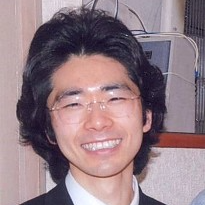Universe: Feature Papers 2023—Cosmology
A special issue of Universe (ISSN 2218-1997). This special issue belongs to the section "Cosmology".
Deadline for manuscript submissions: closed (31 October 2023) | Viewed by 37874
Special Issue Editor
Interests: particle cosmology; gravity theory; inflation; late time acceleration
Special Issues, Collections and Topics in MDPI journals
Special Issue Information
Dear Colleagues,
This Special Issue aims to set itself at the cutting edge of the most recent advances in the intertwined ties of cosmology with other fields at all relevant scales from mutually fertilizing theoretical, phenomenological and experimental perspectives. Topics include, but are not limited to, the following:
- Cosmological Models
- Inflationary cosmology
- Big Bang
- Bounce Cosmology
- Cosmic String/Superstring Theory
- Quantum Cosmology
- Observational Cosmology
- LCDM Cosmology
- Dark Matter and Dark Energy
- Axion Cosmology
- Cosmic Acceleration
- Cosmological constants
- Cosmological Perturbation Theory
- Cosmic Microwave Background (CMB)
- Hubble's Law/Constants
- Machine Learning and Cosmology
- The Large-Scale Structure of the Universe
You are welcome to send short proposals for submissions of Feature Papers to our Editorial Office ([email protected]). They will be evaluated by Editors first, and the selected papers will be thoroughly and rigorously peer reviewed.
Dr. Kazuharu Bamba
Guest Editor
Manuscript Submission Information
Manuscripts should be submitted online at www.mdpi.com by registering and logging in to this website. Once you are registered, click here to go to the submission form. Manuscripts can be submitted until the deadline. All submissions that pass pre-check are peer-reviewed. Accepted papers will be published continuously in the journal (as soon as accepted) and will be listed together on the special issue website. Research articles, review articles as well as short communications are invited. For planned papers, a title and short abstract (about 100 words) can be sent to the Editorial Office for announcement on this website.
Submitted manuscripts should not have been published previously, nor be under consideration for publication elsewhere (except conference proceedings papers). All manuscripts are thoroughly refereed through a single-blind peer-review process. A guide for authors and other relevant information for submission of manuscripts is available on the Instructions for Authors page. Universe is an international peer-reviewed open access monthly journal published by MDPI.
Please visit the Instructions for Authors page before submitting a manuscript. Submitted papers should be well formatted and use good English. Authors may use MDPI's English editing service prior to publication or during author revisions.
Benefits of Publishing in a Special Issue
- Ease of navigation: Grouping papers by topic helps scholars navigate broad scope journals more efficiently.
- Greater discoverability: Special Issues support the reach and impact of scientific research. Articles in Special Issues are more discoverable and cited more frequently.
- Expansion of research network: Special Issues facilitate connections among authors, fostering scientific collaborations.
- External promotion: Articles in Special Issues are often promoted through the journal's social media, increasing their visibility.
- e-Book format: Special Issues with more than 10 articles can be published as dedicated e-books, ensuring wide and rapid dissemination.
Further information on MDPI's Special Issue polices can be found here.






